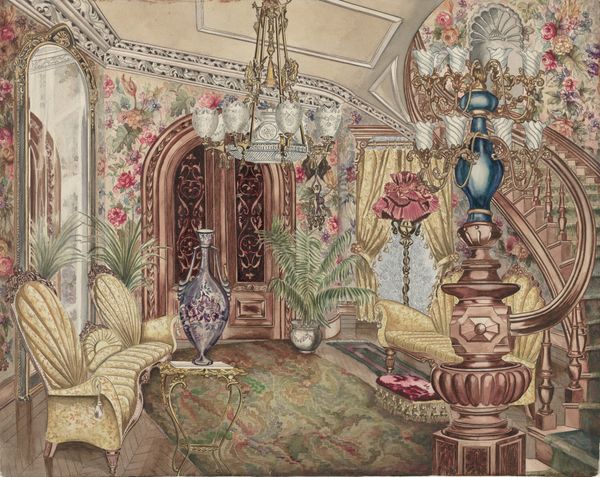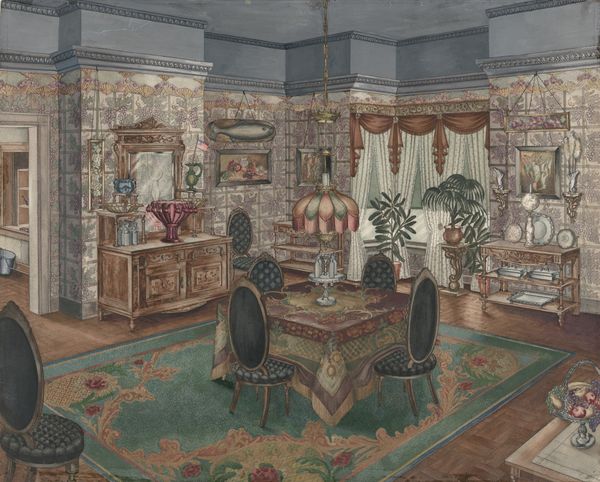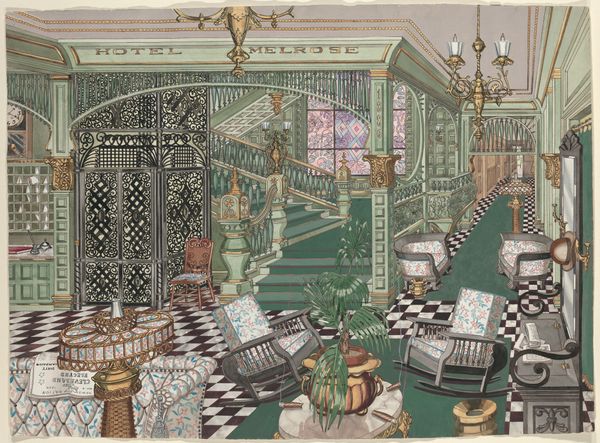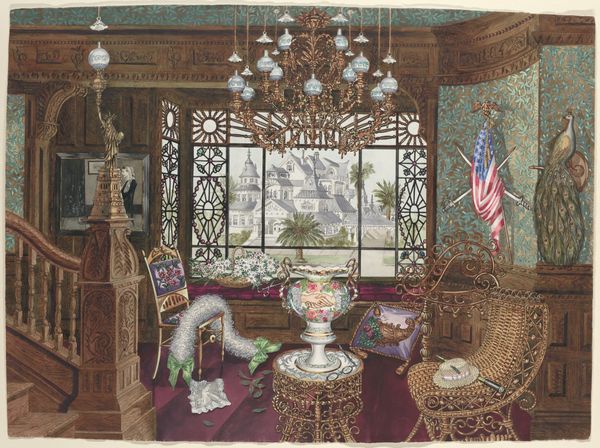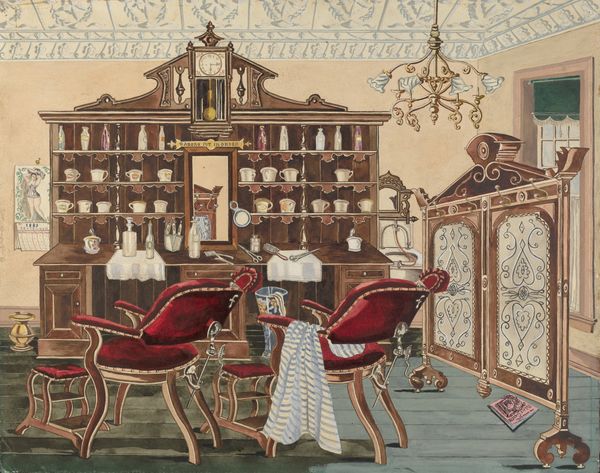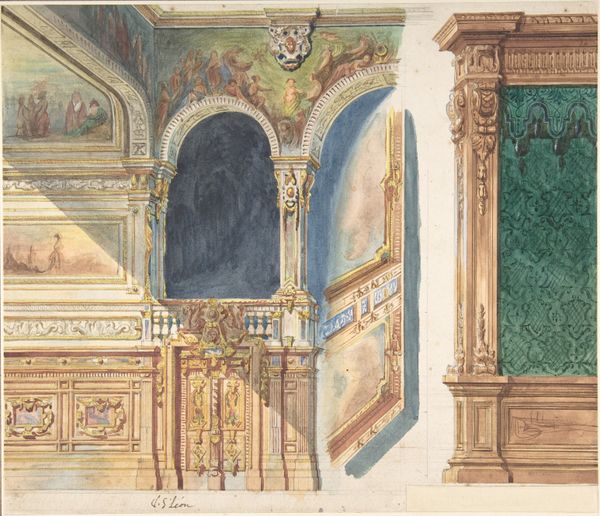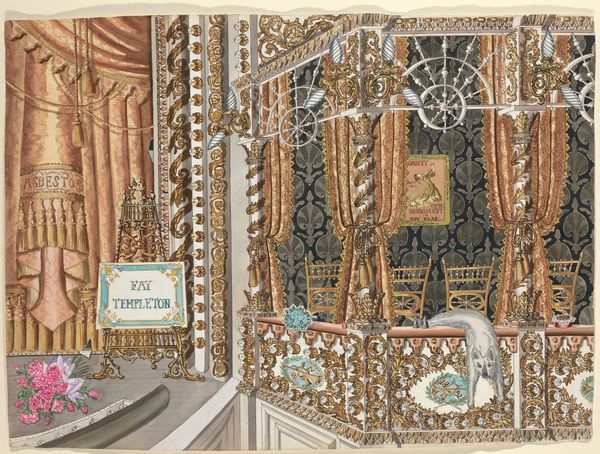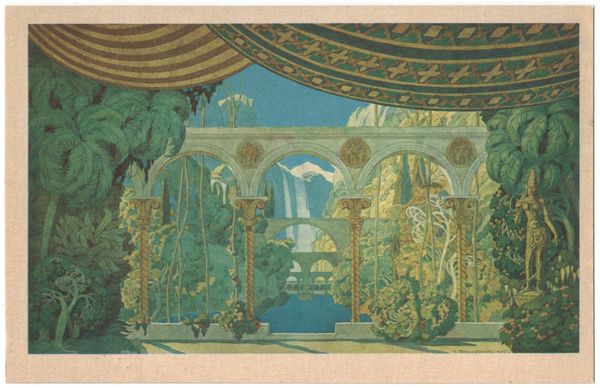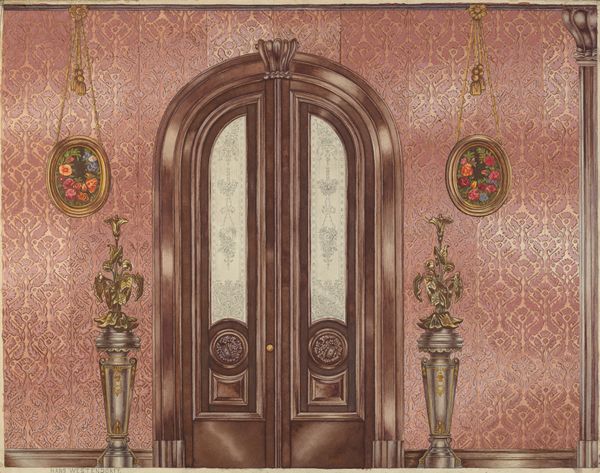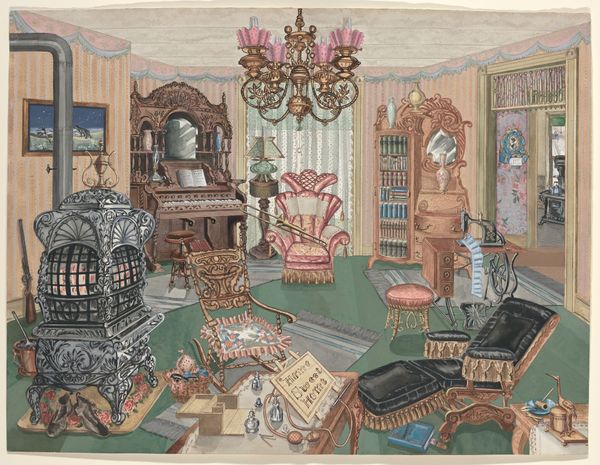
drawing, watercolor
#
drawing
#
watercolor
#
cityscape
#
genre-painting
#
watercolor
Dimensions: overall: 51.5 x 67.4 cm (20 1/4 x 26 9/16 in.)
Copyright: National Gallery of Art: CC0 1.0
Curator: Welcome. The artwork before us is titled "Pool Room, 1890" by Perkins Harnly, rendered sometime between 1935 and 1942. Harnly worked primarily in watercolor and drawing. Editor: Immediately, I'm struck by the density of detail and the elaborate ornamentation—it's almost claustrophobic, yet oddly captivating. The play of light from the lamps above the pool table, the ornate decor—it all feels meticulously constructed. Curator: Absolutely. This piece offers a fascinating glimpse into gender and leisure during the late 19th and early 20th centuries. Pool rooms, often spaces dominated by men, became sites where social and class dynamics were negotiated. Harnly, we must also acknowledge, was a queer artist whose gaze likely infuses this depiction with layers of coded meaning, from the idealized stained-glass women flanking the table to the more subtly placed objects of domestic life. Editor: Yes, I see your point, and I find myself thinking about the composition itself. The artist seems to be concerned with the formal arrangements within the defined pictorial space; note the careful distribution of weight on each side. The billiards table dominates the central foreground plane; the couches act to draw the eyes back—almost toward a vanishing point behind. And I can’t ignore the material presence; the rich surface textures brought out by his handling of the watercolor are exceptional. Curator: Consider, too, the implications of situating figures—represented as these rather static, decorative elements—within a space so heavily defined by luxury and performance. Harnly's choices speak to how women were often relegated to ornamental roles, even in supposedly "private" spheres. The very notion of leisure here takes on a gendered dimension. How might this have reflected, or challenged, dominant ideologies of his time, as seen through his specific, and clearly knowing, queer lens? Editor: Your reading is compelling. It is not a point that can be discounted. My take, perhaps, stems more from an appreciation of his formal command: how he constructs and articulates visual information via the considered compositional strategies deployed here. Curator: Indeed, our different perspectives allow us a broader understanding of how an artwork can function simultaneously on multiple levels. The artist can, in effect, encode historical truths by aesthetic means. Editor: Agreed. And this tension enriches the visual experience, allowing us a nuanced comprehension of what we see and perhaps a better idea of where we might want to begin thinking.
Comments
No comments
Be the first to comment and join the conversation on the ultimate creative platform.
